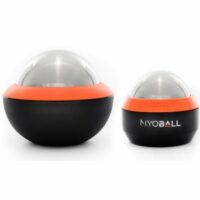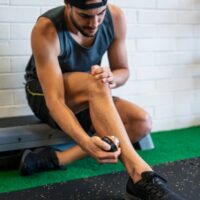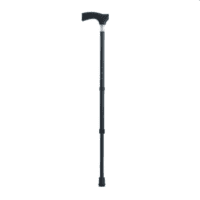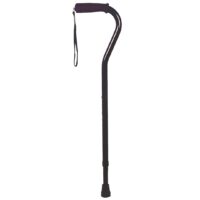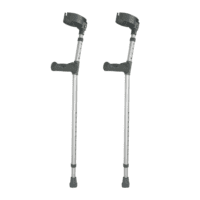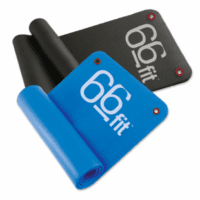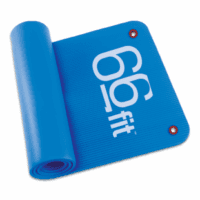Slipped Capital Femoral Epiphysis (SCFE)
Article by John Miller

What is Slipped Capital Femoral Epiphysis (SCFE)?
Slipped Capital Femoral Epiphysis (SCFE), also known as Slipped Upper Femoral Epiphysis (SUFE), is a hip joint disorder that typically affects adolescents.
What Causes SCFE?
Weakness in the growth plate, also known as the epiphyseal plate, located at the top of the femur or thigh bone causes it. This weakness can cause the head of the femur to slip backwards and downwards. As a result, the affected individual may experience gradual onset of pain in the groin, hip, thigh, or knee, as well as limping and restricted hip joint range of motion. In addition, SCFE can cause the affected leg to shorten, resulting in differences in leg length.
While the exact cause of SCFE is unknown, there is speculation that increased weight and hormones may play a role. Some cases may cause it due to trauma or a fall, and doctors diagnose it by conducting a clinical examination, X-ray, and possibly a CT scan.
SCFE Treatment
Treatment usually requires surgery, where an Orthopaedic Surgeon inserts a screw to stabilise the growth plate and prevent further slipping of the femoral head.
Post-Operative Rehabilitation
After surgery, your child will need crutches or a wheelchair and cannot fully bear weight for approximately six weeks until the growth plate fuses. Once the growth plate has fused, surgeons can usually remove the screws.
Resting from intense activities like running and contact sports will be necessary to let the growth plate fuse.
Once the growth plate is stable, a gradual return to loaded activities can begin. Post-operative physiotherapy can assist in recovery by providing advice and education on appropriate post-operative activity, hip mobility exercises, progressive hip stability and strengthening exercises, and assisting with a return to sport.
At PhysioWorks, our physiotherapists can help your child get back on track following surgery. Please contact us if you have any questions or would like your child to start a rehabilitation program.
Rochedale - Call 38410277
Book Online: RochedaleSalisbury - Call 32751044
Book Online: SalisburySandgate - Call 32691122
Book Online: SandgateIntroduction to Hip & Groin Pain
Hip and groin pain affects a wide array of individuals, from athletes to the elderly. Understanding the common causes and treatments of this pain is vital for maintaining overall well-being and mobility.
Common Causes of Hip Pain
- Hip Joint Pain: This includes conditions like hip osteoarthritis, where the hip joint undergoes wear and tear, leading to inflammation and pain.
- Hip Labral Tear: A tear in the ring of cartilage surrounding the hip joint socket, often causing sharp pain during movement.
- Femoroacetabular Impingement (FAI): An abnormal hip joint shape that can lead to labral tears and arthritis.
- Stress Fracture: Small cracks in the hip bone, often due to overuse.
- Avascular Necrosis: Loss of blood flow to the femoral head, leading to joint destruction.


Lateral Hip Pain and Its Causes
- Greater Trochanteric Pain Syndrome: Inflammation of the tissues surrounding the hip.
- Gluteal Tendinopathy: Inflammation or irritation of the gluteal tendons.
- Trochanteric Bursitis: Inflammation of the bursa near the hip joint.
Groin Pain: Different Types and Causes
- Adductor-Related Groin Pain: Injuries to the muscles on the inner thigh.
- Osteitis Pubis: Inflammation of the pubic symphysis, often seen in athletes.
- Iliopsoas-Related Groin Pain: Strain or injury to the hip flexor muscles.
Other Muscle-Related Pain
- Piriformis Syndrome: Compression of the sciatic nerve by the piriformis muscle.
- Muscle Strain: Overstretching or tearing of muscle fibres.
- Core Stability Deficiency: Weakness in the core muscles, affecting hip stability.
Systemic Diseases Affecting the Hip
- Osteoporosis: Bone weakening, increasing fracture risk.
- Rheumatoid Arthritis: An autoimmune disease causing joint inflammation.
- Fibromyalgia: Widespread muscle pain and tenderness.
Referred Pain Sources
- Sciatica: Pain radiating along the sciatic nerve, which runs from the lower back through the hips and down the legs.
- Lower Back Pain: Can refer pain to the hip area.
- Pinched Nerve: Nerve compression in the spine or hip area.
Hip Surgery: A Solution for Severe Cases
- Hip Replacement: A surgical option for severe hip arthritis or damage.
What's New in Hip & Groin Pain Research?
Recent studies suggest the importance of tailored exercise programs in managing hip and groin pain. Physiotherapy techniques focusing on strengthening and stabilising the deep hip rotators and core muscles have shown significant improvements in pain management and mobility.
What to Do? Seeking Professional Advice
If you're experiencing hip or groin pain, it's crucial to consult with a physiotherapist or doctor.
They can assess your condition, provide a personalised treatment plan, and guide you through exercises tailored to your specific needs.
Conclusion
Hip and groin pain can significantly impact your quality of life. However, with the right knowledge and professional guidance, managing and overcoming this pain is achievable.
Rochedale - Call 38410277
Book Online: RochedaleSalisbury - Call 32751044
Book Online: SalisburySandgate - Call 32691122
Book Online: SandgateRelated Articles
- Groin Pain Management - Expert advice on managing groin pain, covering causes such as adductor tendinopathy and femoroacetabular impingement.
- Hip, Groin & Buttock Pain FAQs: Symptoms, Causes, Treatments - Answers to frequently asked questions about hip, groin, and buttock pain, including symptoms, causes, and treatments.
- Hip Labral Tear - Information on hip labral tears, their symptoms, and treatment options.
- Piriformis Syndrome - Understanding & Physio Treatment Tips - Insight into piriformis syndrome, a condition causing buttock pain and how physiotherapy can help.
- Trochanteric Bursitis - Hip Bursitis: Causes & Treatments - An article explaining the causes of hip bursitis and offering treatment solutions.
- Groin Strain - Discusses groin strains, their symptoms, causes, and treatment methods.
- Gluteal Tendinopathy: Causes, Symptoms, And Treatment - Offers insights into the causes and treatment of gluteal tendinopathy.
Hip, Groin, Buttock Pain FAQs
Welcome to our comprehensive FAQ section, designed to address your concerns about hip, groin, and buttock pain. Here, we aim to provide clear, accessible information to help you understand the potential causes of your discomfort and the various treatment options available. Our physiotherapy experts have compiled a series of questions and answers to guide you through common issues, from hip impingement to sciatica, and everything in between. For more in-depth exploration, we've linked to related articles on our website, allowing you to delve deeper into each topic.


Hip Pain FAQs
Dealing with hip pain can be challenging, impacting your mobility and quality of life. Explore our detailed articles for insights on diagnosis, treatment options, and the importance of hip core muscles in maintaining joint health.
Lateral Hip Pain FAQs
Lateral hip pain, including conditions like gluteal tendinopathy and hip bursitis, requires targeted treatment strategies. Discover effective physiotherapy approaches to manage and alleviate your pain.
Groin Pain FAQs
Groin pain can significantly affect your ability to perform daily activities. Learn how to recognise serious symptoms and find effective relief methods through our expert advice.
Buttock Pain FAQs
Buttock pain, including conditions like SIJ pain and sciatica, can be debilitating. Our articles offer insights into symptoms, causes, and comprehensive treatment options to help you recover.
Conclusion
Our FAQ section is designed to be your go-to resource for hip, groin, and buttock pain. Whether you're dealing with a temporary discomfort or a chronic condition, understanding your symptoms and knowing the best treatment options is crucial. Remember, while our website provides valuable information, consulting a physiotherapist for a tailored diagnosis and treatment plan is always recommended. Explore our related articles for more in-depth knowledge and take the first step towards a pain-free life today.
Related Articles
- Greater Trochanteric Pain Syndrome (GTPS) - Readers can learn about the causes and management of pain near the greater trochanter, which is closely related to lateral hip pain.
- Trochanteric Bursitis - Hip Bursitis: Causes & Treatments - This article explains the causes of hip bursitis and offers treatment solutions, relevant to those experiencing lateral hip pain.
- Gluteal Tendinopathy: Causes, Symptoms, And Treatment - Offers insights into the causes and treatment of hip tendinitis, a condition linked to lateral hip pain.
- Hip Adductor Tendinopathy - Effective Physio Solutions - Focuses on groin pain caused by inflammation or degeneration of tendons in the hip region, directly relevant to the groin pain FAQ.
- Hip Flexor: Iliopsoas Groin Pain: Causes And Treatment - Provides detailed information on hip flexor issues, which can cause groin pain, making it highly relevant to readers of the original article.
- Hip & Groin Pain Guide: Causes, Treatment, Physio Advice - A comprehensive guide on hip and groin pain, covering common causes and treatments that align with the article's topics.
- Piriformis Syndrome - Understanding & Physio Treatment Tips - Discusses piriformis syndrome, a condition causing buttock pain, which is directly related to one of the SEO keywords.
- What Is Hip Impingement? - Explains hip impingement, a condition causing hip and sometimes groin pain, providing valuable insights into potential causes of the reader's discomfort.
- Sacroiliac Joint Dysfunction (SIJ) Causes, Relief, Treatment - Relevant for readers experiencing buttock pain, as it covers SIJ pain, a topic mentioned in the original article.
- Hip Arthritis - While not directly mentioned in the FAQ sections, hip arthritis can be a source of hip pain, making this article useful for readers wanting to understand more about hip conditions and pain management.














